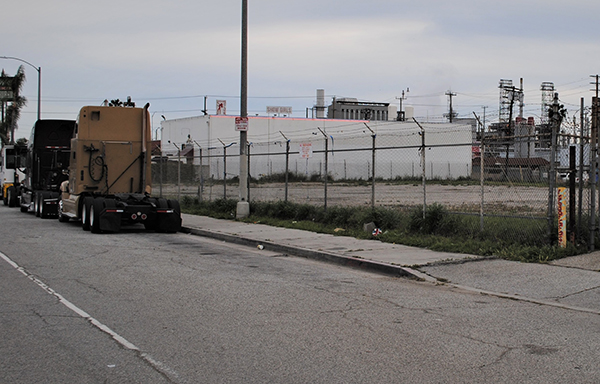By Alfredo Santana
Contributing Writer
LOS ANGELES — Two large empty lots in Wilmington have been tapped to build the first electric charging station for zero emissions trucks to transport containers from the twin ports of Los Angeles and Long Beach along and beyond the Long Beach (710) Freeway.
However, development of such infrastructure would require approval from stakeholders, community members, support from local governments, large public investments and commitment from utility companies to run a site.
Jack Symington, program manager director of transportation with the Los Angeles Cleantech Incubator, made the announcement at the latest Community Leadership Committee meeting as part of discussions organized by the Metropolitan Transportation Authority on future projects along the Long Beach (710) Freeway corridor between Long Beach and East Los Angeles Investment.
Symington said that the lots are located in a working-class neighborhood with industrial shops and large storage yards for cargo containers a few yards away from the Long Beach ports.
He said that a request for $1.5 million in federal funds the Los Angeles Cleantech Incubator made last year to spearhead the project was awarded in January and will be available in the next fiscal year.
“We see a lot of alignment between what [the incubator] wants to do with this funding and [the MTA’s] goal for the [zero emissions truck] program,” Symington said. “It provides a lot of opportunity for regional collaboration.”
The initial funding would play an important role “in catalyzing other regional agencies” to support the $15 million zero-emissions truck charging station, he said during his presentation.
Both properties are owned by the Los Angeles Department of Water and Power and they match the project’s funding guidelines that require a newly funded project provide public benefits.
Symington said the electric vehicle filling station can be built on either lot.
The Los Angeles Cleantech Incubator already made an additional $3 million request to the MTA’s Board of Directors from a $50 million seed fund the agency created to accelerate deployment of clean emissions infrastructure with local, state and federal matching funds as part of projects to reduce smog in the 19-mile corridor and improve movement of goods and people.
The MTA Board of Directors has pledged to provide $200 million to support initiatives geared to transition diesel trucks to zero emissions units and to leverage technology application like charging hubs within the corridor.
To support the initiative, a second key factor would be community engagement.
The public has to be available to weigh in on the charging stations, in addition to owners of small and large fleets to provide input on how feasible it would be to arrive and refill at the facility, Symington said.
In addition, the Los Angeles Cleantech Incubator pledged to reach out to the Southern California Association of Governments to build consensus and get feedback on the proposed station.
“Coordination is a big player in a larger ecosystem,” Symington said. “We want to ensure that [the MTA] and other agencies’ construction standards are met. [The incubator] will ensure that the ports and other partners can hold private sector operations with this.”
Finding available land to build electric charging stations for trucks has been important to convince task force and Community Leadership Committee members to back one of the top projects to scale back rampant air pollution in the area.
Michael Cano, the MTA’s deputy executive officer for goods movement and state policy and programming, said at a recent zero emissions truck gathering that the group’s focus on applied technology seeks to rein in tons of tailpipe pollutants put out by trucks.
The zero Eemissions truck work group meets once a month alongside the taskforce and the Community Leadership Committee to study a spectrum of industry proposals aimed at bringing solutions to the corridor’s diesel particles. “We are making sure that as we are rushed to put forth the zero emissions infrastructure and try to support this greater goal that we all want we are not creating harm on the backside by putting the locations into places that create new impacts for communities, or new equitable challenges in terms of disparities caused by truck movement, even with the [zero emissions trucks],” Cano said.
The challenge, he said, is to translate the zero emission projects into competitive plans that would clinch additional funds from state and federal agencies.
“We are also looking at trying to bring fleets and truck operators to get an even better perspective,” Cano added. “It’s easier to talk to the larger fleets because they have more resources to be able to reach out to governments, to be able to work with us and people who are available.”
The zero emissions work group will consider creating a focus group with small fleets and truck operators to gain an understanding of their perspective, Cano said.
According to the visions and goals statement, the so-called zero emissions trucks work group was created seeking to undo past harms and provide equitable actions to communities hit hard by both traffic and air pollution from the freeway.
Among the items discussed in the work group are identifying sites where the infrastructure can be deployed, the economic and environmental impact the new technologies would bring to communities fighting against air pollution and traffic hazards, and even grant creation for small operators living within the corridor willing to switch to cleaner but expensive tractor trailers.
Wilmington is a community in the city of Los Angeles located west of Long Beach between the Long Beach (710) freeway and Harbor (110) freeways.












